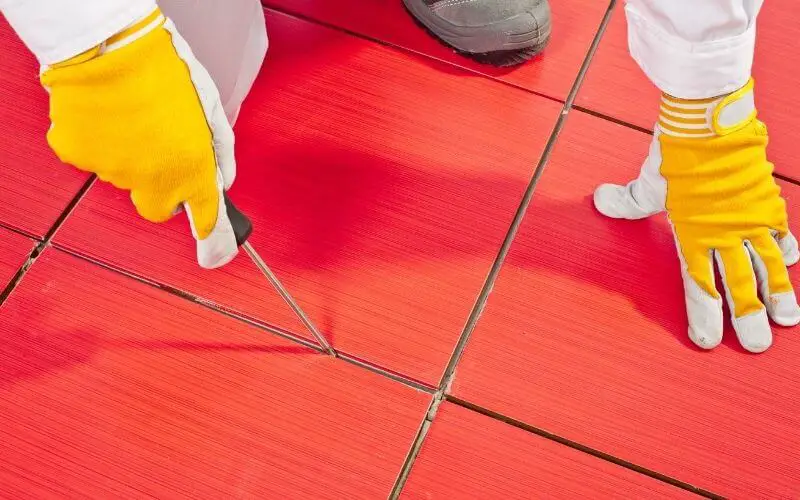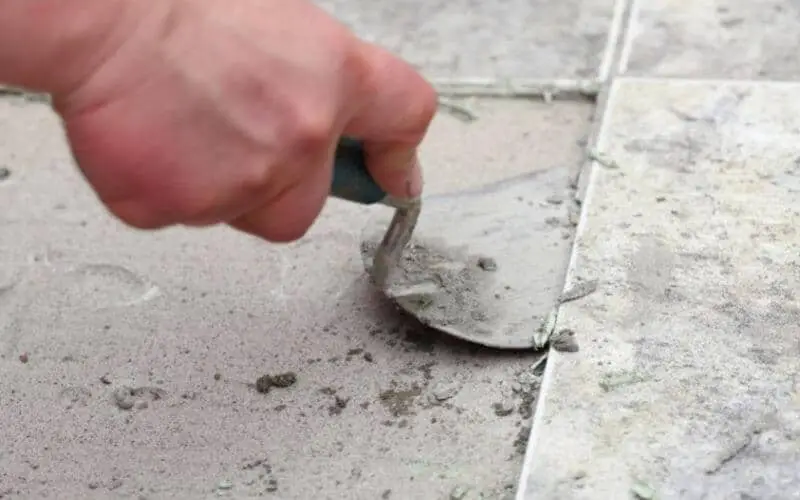Mortar or tile glue is usually under the tiles you have installed on your floor. The use of the two materials is to make sure the tiles are fastened or glued to the floor. That said, we have covered steps on how to remove tile adhesive in a neat manner without cracking it.
Note that removing tile adhesive can be impossible, especially when you are attempting it on your own. This is because once tile adhesive is dry, it becomes so hard.
To help you get clean work done, we’ve put together a quick guide on how to remove tile adhesive.
How to Remove Tile Adhesive
Table of Contents
It’s normal to experience the sense of impossibility when removing dry adhesive notwithstanding. When you are trying to redo a loose or broken tile, and you also want to reuse those tiles, you have to put it in mind to do it accurately.
Follow the steps below for tile adhesive removal
- Fill a bucket or later with warm water
- Put in the tiles, you intend to use for about 1-2 hours
- Before removing the tiles from the water, make sure the adhesive is soft to touch. If it is, then you can go ahead to remove the tiles from the bucket.
- With the use of a metal scraper, start scraping or removing the adhesive from the back of the tiles.
Make sure you are careful not to destroy the tile’s surface, and at the same time, be sure to remove all the adhesive residuals. That way, you won’t have problems when installing the tiles.
How To Remove Mastic Adhesive From Floor Surface
Mastic is mainly used for the installation of wall and floor tiles, and it is an organic adhesive.
Another thing about mastic is that it can’t resist water. So once it touches water, it will automatically dissolve.
Note that if you want to remove tile adhesive indoors, you are in for a messy job, which means you have to be prepared.
To do this, you have to make sure certain things are in place.
- Wear gloves
- Wear a par protective mask
- Put in protective goggles
- Since the adhesive will create a lot of dust, do well to wet the floor. It will help reduce the amount of dust made in the process.
Soak the Mastic
Get some clothes, make sure they are damped then place them on top of the adhesive you intend to remove
Now you have to wait for few hours so that the adhesive will absorb the water from the damp clothes. This makes it easy to scrape out the mastic.
Scrape Off The Mastic
- Using A Hammer And A Chisel:
Using an electric hammer with a chisel comes in handy when performing this task, especially if you’re working on a large area.
But if you have a small area, you can make use of a regular hammer. With the option of an electric hammer with a chisel, you will find it much easier and faster to complete the task. It also saves a lot of time in the process.
Once the area is dampened with a bit of water, you can then start removing the adhesive. All you have to do is position the chisel on the tiles at 45° and carefully smash with the hammer.
Make sure you don’t destroy the area below the adhesive. Once a spot has been cleared, you can put the chisel at 25°-30°.
This will aid you in being able to put the chisel under the adhesive and then use a scraper to remove it.
The tile surface requires a plastic scraper because it has a glazed surface that could get damaged if you use a metal scraper. You can also make off an electric power scraper if you are working in a large area.
- Using a Grinder
A floor grinder is best suited for removing a thick layer of adhesive. The grinder uses circular motions to cut and break the adhesive from the floor. Ensure to wear protective goggles, a dust mask and gloves to protect yourself from the huge amount of dust that will be generated during the process.
- Use a Scraper
You can make use of a scraper to remove adhesive if the adhesive film is thin. Be gentle with the process as it can result in some breakage.
Depending on the type of tile, you can use either a plastic scraper or a metal scraper. You can also use an electric power scraper if the area you’re working on is large.
Read: How to cut VCT tile
Can I use tile adhesive instead of mortar?
It all boils down to personal design preference. Mortar is thick while tile adhesive is very thin. That said, some projects favors mortar while others works preferably with tile adhesive. Mortar is designed to work with most tiles including glass and stone tile, while tile adhesive is designed mostly for ceramic and porcelain tiles. Both options go a long way towards keeping tile in place.
Do you have to remove old tile adhesive before tiling?
As long as it is not loose, It is not necessary to remove old tile adhesive before tiling. You can scrape the surface to make it as flat as possible. There is also no harm in removing the old adhesive, simply soften the adhesive so it can be easily scraped off.
Conclusion
This article is a quick guide on how to remove tile adhesive from underneath the tiles as well as the floor surface. Tile adhesive might be quite challenging to remove, but it can be done.
Removing tile adhesive will enable you to reuse the tiles and prepare your floor surface for any other floor installation after taking out your tile flooring.

